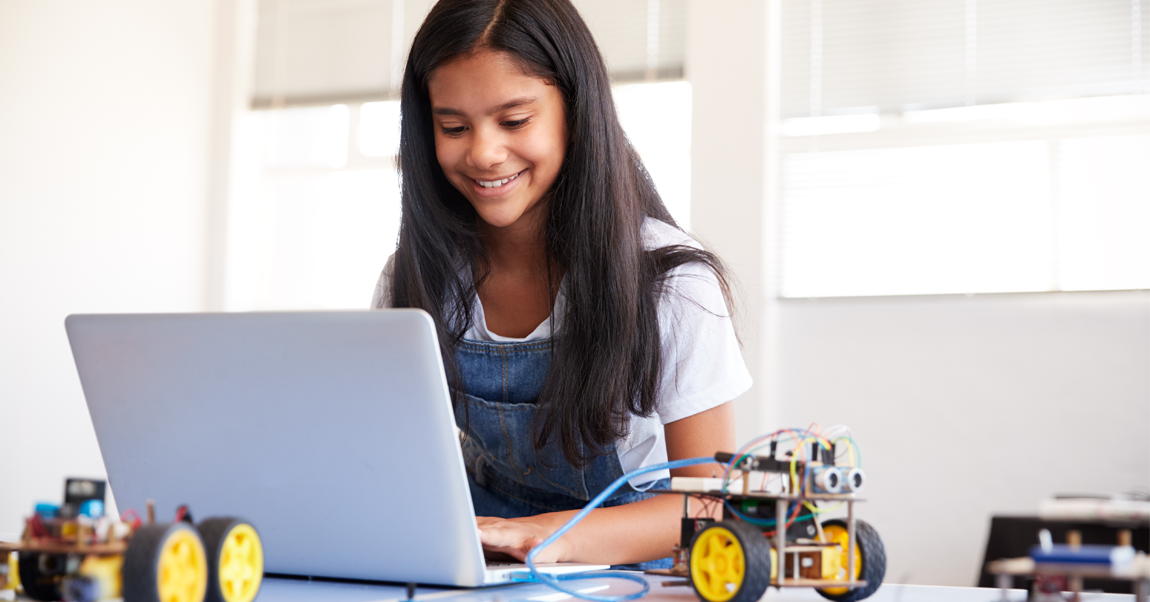
As the school year approaches the home stretch, many PBL students are preparing to present and showcase their work.
This may take the form of an exhibition of senior projects or capstone projects, which should be a culminating high school experience. If designed with the Gold Standard Project Design Elements in mind, these can be the ultimate Project Based Learning experiences where students often design, plan, and implement their own projects.
Given the current context of learning during a global pandemic, teachers and students may find themselves rethinking what these experiences can and will look like. This also presents the opportunity to consider how our real-world context might reshape their project work.
For example, some of the teachers I support with implementing the senior capstone projects in my district have offered students the opportunity to pivot their projects. This gives them the freedom to consider how they are feeling about their work and its importance and ask themselves “How does the state of our world, community, and education right now matter to them and their work?” This freedom to change and lack of constraint may result in an even more engaging or meaningful experience for the student.
Many students are likely disappointed at the prospect of not being able to share their end-of-year work in person with other people. However, we have an opportunity for students to reflect on project work and consider or reconsider the following questions:
1. Who is the best audience for sharing what I have learned?
Audience is an inherent part of both authenticity and public product, two of the design elements of Gold Standard PBL. Students must reflect on how to “make their work public by explaining, displaying or presenting to an audience beyond the classroom.” The audience now may be different than what was originally planned or intended.
Similarly, students may wonder how their project is still “meaningful and relevant” and who might be interested in their work. In many PBL experiences, students share their work with a panel or an audience in a live presentation. Considering this question again asks students to reach out to those in the community whom they may have not connected with—but who may actually represent an even more authentic audience.
While the school buildings and classroom doors are currently closed, there are people in the field who are still very much connected and interested in what students have learned or created. For example, if their project focused on addressing mental health advocacy for teens, they might connect with a practitioner in that field to share their findings and conclusions and learn about telehealth work that is currently happening. If the student’s project resulted in advocating for a policy change, then the audience may be the policymakers. Students might consider writing a letter or sharing their plans/ideas/findings in writing with legislators or other changemakers.
2. What is the best tool or way to share what I have learned?
Many PBL experiences and capstone projects culminate in a presentation of learning or showcase of products to the public—perhaps families, other students, and educators. Though that face-to-face format for sharing work is not currently available, students and teachers alike now have an opportunity to approach this differently.
This new reality for students might include trying out a new tech tool that they hadn’t considered prior to the school closure. Many ideas for this are suggested by PBLWorks National Faculty in a previous blog post on Using PBL in Remote Learning. Additionally, Common Sense Media has a comprehensive list of presentation tools to consider.
One way to consider this is to think about the purpose for sharing the learning and what tool would be best.
For example, if a student’s project results in curating a set of resources or ideas into a visual presentation, they might consider creating a Padlet to share; they could do this in a low tech way, as well. If a student wants to have a live audience to engage with, then the teacher might set up a Zoom call or Google Meet, using the security and privacy features available to them. If a student wants to provide a presentation of their learning that is available to be shared, then they might utilize Screencastify or another screencasting tool. Ultimately, the goal is for students to have the opportunity to share their learning with others in a way that makes sense.
3. How will I gather feedback and reflect on what I have learned?
As these projects switch gears and move into a virtual or remote context, the opportunity for feedback and student reflection will continue to be essential. When others acknowledge and take interest in our work in person, much of that comes through face-to-face interactions. While that is not available in social distancing, feedback remains an essential part of the growth process of such a culminating experience.
Teachers can consider alternate opportunities for students to provide feedback to each other and opportunities to reflect. For example, Flipgrid offers an effective tool to pose questions for feedback and reflection.
While the presentation or public product component of these projects will not be the same as once envisioned, the learning can be just as powerful. Ultimately, the hope is that as educators, we can continue to engage and empower our students, by supporting them and honoring their experiences, interests, and hard work.

